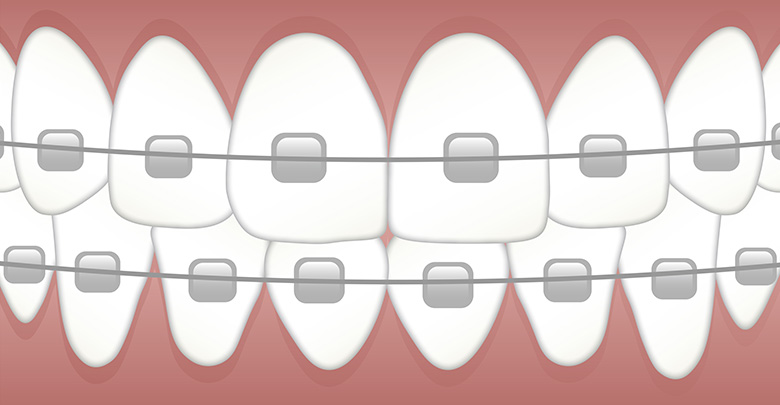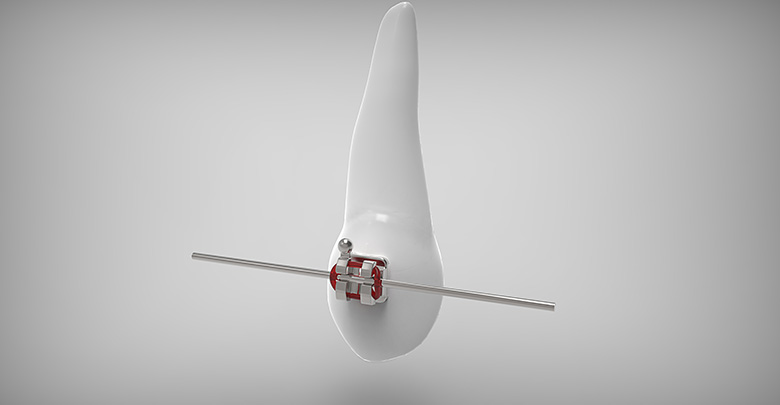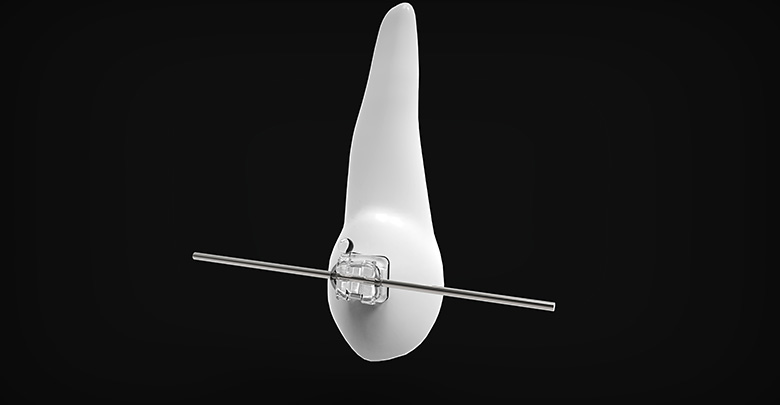
Braces are mainly used for teeth-straightening treatment. Braces can fix problems like big gaps between teeth, upper teeth covering lower teeth too much (overbite), lower teeth covering upper teeth (underbite), crossbite, open bite, and crowded or crooked teeth caused by not having enough space. Treatment with braces can make a patient’s smile look much better. Based on how the wire is held in place, braces can be divided into two types: self-ligating braces and traditional braces.
Indice dei contenuti
1. What are Self-ligating and Traditional Braces?
Self-ligating Braces They are made of brackets and a wire. They have a special clip or door that traditional braces don’t have. They are glued to the surface of the teeth with a special glue. This clip or door holds the wire in the bracket’s slot to straighten the teeth.
Based on the material, there are two types of self-ligating braces:
- Metal Self-ligating Braces: These are made of metal. They are strong and work well, but you can see them easily. Because of this, many business professionals, flight attendants, and teachers choose to put the metal braces on the back of their teeth (lingual side) so they can’t be seen.
- Ceramic (Clear) Self-ligating Braces: These are made of a ceramic material. They are clear and look better. The downside is that they can break more easily than metal ones.
Traditional Braces They are usually made of a wire, brackets, and ties. The brackets are usually made of stainless steel. After the brackets are glued to the teeth, the ties (which are usually small rubber bands) connect the wire to the brackets. This puts pressure on the teeth to straighten them. In terms of looks, traditional braces are very noticeable and don’t look as good.

2. Comparing Self-ligating and Traditional Braces
1. How They Look
- Self-ligating Braces: You can’t customize how they look.
- Traditional Braces: The rubber band ties come in many different colors you can choose from. This can add some fun to your treatment.
2. Comfort During Treatment
- Self-ligating Braces:
- They are an improved version of traditional braces. They use a sliding clip to gently move the teeth, which puts less pressure and friction on them.
- This helps teeth move to the right place faster and with less pain. You can see the results sooner.
- Compared to traditional braces, it’s easier to keep self-ligating braces clean because food doesn’t get trapped as easily. This helps keep your mouth healthier.
- Traditional Braces:
- The rubber bands create a lot of friction with the wire. This puts more pressure on the teeth, and patients can easily feel uncomfortable.
- The rubber bands also get soft in your mouth and need to be changed about every 4 weeks. If not, it can affect the straightening results.
- Compared to self-ligating braces, food gets stuck in the ties easily. It takes a lot of time and effort to clean them properly. If not cleaned well, it can lead to plaque, cavities, or even white spots on your teeth.
3. Treatment Time
- Traditional Braces: Treatment usually takes 18 to 36 months. You need to visit the dentist every 4-6 weeks.
- Self-ligating Braces: Compared to traditional braces, the treatment time is often shorter, and you need fewer follow-up appointments. Treatment time with self-ligating braces is usually 12 to 24 months. You need to visit the dentist every 4-8 weeks, which is less often than with traditional braces.
4. Price Comparison
- Traditional braces are usually cheaper than self-ligating braces.
- The total treatment time depends on the type of braces, your specific dental situation, and how well you follow the doctor’s instructions. Your dentist will tell you how long it will take after an evaluation.

3. Which Braces Are Better for You?
How to choose the right braces for you:
Traditional braces are good for:
- Patients on a limited budget. Traditional braces are usually cheaper than self-ligating braces.
- They are more suitable for complex straightening cases.
- Teenagers. Because traditional braces require more frequent visits, they are a good choice for teenagers who have more free time.
Self-ligating braces are good for:
- Business professionals who care about how they look. Self-ligating braces look better, and you don’t need to visit the dentist as often, which is good for people with jobs.
- Patients who want more comfort. During treatment, self-ligating braces can reduce discomfort by 40% compared to traditional braces.
- They are a better choice for cases that need to widen the dental arch.
- Patients with gum problems or weak gums, because the treatment process is gentler.
In Conclusion
The choice of braces depends on your budget (prices can be very different between the city and suburbs), your personal dental situation, and what you want from your braces. Before you decide, think about your financial situation and get opinions from 2-3 different professional orthodontists.
But no matter which type of braces you choose, you must follow your doctor’s instructions. That is the only way to get the best results.
